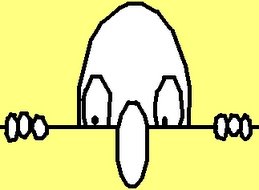In his discussion of the desirable attributes for a battlefield commander, Clausewitz wrote of the importance of “coup d’oiel” – perhaps best described as the ability to quickly recognize a truth that would ordinarily be missed or perhaps only perceived after long study and reflection. Whatever his other virtues, President Obama’s approach to his decision about what to do in Afghanistan clearly demonstrates that he is not choosing to rely on any personal sense of coup d’oiel in this instance. Given that we are already in October and what Clausewitz would have called the campaigning season is nearly over in Afghanistan, this deliberative process need not be considered a fatal flaw.
This morning (October 26), the Washington Post and other news sources are reporting that Obama’s deliberative process has included at least two war games exploring different US troop commitment levels. Given that the history of war gaming as a tool of military study and analysis (as well as an entertainment) is strewn with tales of political and military decision-makers mislead by war games, one can only hope that the decision makers have actually heard the cautionary voices of any professionals associated with these games.
In the most infamous war game incident, the Imperial Japanese Navy (IJN) tried out its plan for the attack on the island of Midway in a war game in which the “American” side sank four JN aircraft carriers. The game directors restored the four carriers to the IJN side and the game proceeded to the anticipated Japanese victory. However, as naval historians and others will recall, at the actual Battle of Midway, the US Navy – aided by its ability to read Japanese communications – did go on to sink four IJN carriers and turn back the invasion force. (Many tellers of this story fail to point out that the game directors were not wrong in restoring the carriers because every war game has a whole list of questions to examine and in this case the game had to go on to examine them. The error would have been in the IJN failing to take note of the fact that the USN was still a potentially dangerous foe.)
However, this story also reflects a harsh reality about war games as an analytical tool – no matter how much data is piled up and analyzed for inclusion in the game, the war game is not predictive or prescriptive. A well planned and well conducted war game can clarify issues associated with a proposed course of action, but it cannot guarantee a specific real world outcome. In fact, the Prussian Kriegsspiel, a common ancestor of modern war games was no more than a tool that allowed Prussian officers to practice decision-making. It was not considered a valid or useful tool of analysis or for predicting the outcome of a military operation or campaign. (History also tells us, however, that even the Prussians would eventually attach almost mystical faith in their war gaming of various military plans and options.)
There are several reasons for limits upon what war games can tell us. One can be described in a paraphrase of the words of Chief of the General Staff Count Helmut von Moltke – “No war game scenario survives contact with the war gamer.” Or in the words of many a modern field grade American officer, “The enemy gets a vote.” No matter how well educated, informed, and talented they are, the war gamer will not exactly replicate the battlefield decisions that will be made by the real opponent. I know that many hobby and professional war gamers have designed a war game or a war game scenario only to find their expectations for that design shredded by the completely unforeseen and unexpected decisions of a war gamer seeing it for the first time.
Designers of (both hobby and professional) war games are familiar with the limits upon any attempt to model battlefield reality. Every one of them can tell of having presented the latest and most complex simulation to date, only to have someone point out how the design overlooks the extremely important factor of “X.” The reality is that there are just too many factors affecting and influencing a battle and its related decision making process to be captured in any war game.
I do wonder whether these war games factored in what is likely to be the real “schwerpunkt” or decision point of any renewed or expanded American military effort in Afghanistan: American public opinion. The Administration will have to do a very good job of selling its Afghan war strategy to the American people if it is to be given time for that strategy to bear fruit. Clearly, ongoing events in Iraq will color popular reaction to plans for Afghanistan. The US has the option to try and push the reset button in Afghanistan but they will not be able to reset public opinion on the conflict in Afghanistan without the investment of major political assets.
Note: Similar stories can be found about the use of war games during World War II by the German High Command as it pondered decisions on the Eastern Front. In a related note, it is ironic that as the Allies began the D-Day invasion of France at Normandy, many senior German commanders were out of position because of a scheduled German Army kriegsspiel on the subject of a possible Allied invasion.
Monday, October 26, 2009
Subscribe to:
Posts (Atom)

